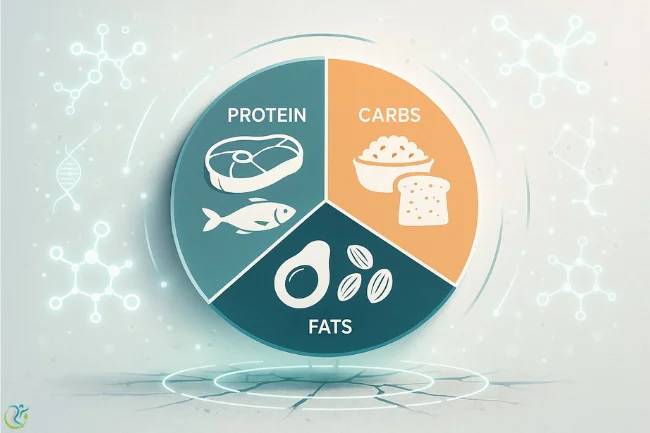
Bulking is one of the most critical phases in a powerlifter’s training cycle. For powerlifters, it lays the foundation for strength gains, muscle hypertrophy, and overall performance when it comes time to peak for competition. However, not all bulking strategies are created equal. Research shows that careful manipulation of training, nutrition, and supplementation can make the difference between building lean mass and unnecessary fat gain.
When done properly, bulking isn’t about eating recklessly or lifting without direction—it’s about fueling performance, managing recovery, and maximizing muscle growth. By aligning your approach with evidence-based methods, you can ensure that each phase of your bulk contributes directly to long-term strength progression.
This article explores practical ways to optimize bulking for powerlifters using proven strategies in resistance training, macronutrient distribution, and research-driven supplementation from Modern Aminos.
Why Powerlifters Need a Strategic Bulk
Unlike bodybuilders who often bulk for aesthetics, powerlifters bulk primarily to maximize strength. This means that the weight gained must translate to better leverage, stronger lifts, and improved recovery capacity. Research has consistently highlighted that strength correlates with muscle cross-sectional area, meaning the more quality muscle you build, the more potential you have for higher lifts.
However, overbulking with excessive fat gain can impair mobility, increase joint stress, and limit weight-class performance. The key lies in controlled caloric surplus: enough to grow muscle, but not so much that body fat accumulation outweighs strength benefits.
Training Considerations During a Bulk

Progressive Overload as the Foundation
Powerlifters should treat bulking as an opportunity to steadily increase training volume and intensity. Evidence shows that higher training volume promotes greater hypertrophy, provided recovery is managed. Focus on progressive overload in the big three lifts—squat, bench press, and deadlift—while also incorporating accessory work to address weak points.
Frequency and Recovery Balance
While training more frequently can accelerate adaptation, balance is essential. Studies demonstrate that hitting each major muscle group twice per week often yields superior gains compared to once-weekly training. However, sleep and rest days remain non-negotiable for muscle repair and growth.
Periodization for Sustainable Growth
Periodized training cycles that alternate between hypertrophy, strength, and deload phases prevent stagnation and overtraining. By structuring workouts to match your caloric intake, you ensure that added nutrition translates into sustainable long-term gains.
Nutrition: The Cornerstone of Bulking
Caloric Surplus for Powerlifters: Doing It Right
For powerlifters, a surplus of 250–500 calories per day above maintenance is typically sufficient. Research suggests that lean mass gains are maximized when bulking is gradual, rather than aggressive. Rapid bulking often leads to excessive fat storage, which provides no strength advantage.
Macronutrient Ratios for Powerlifters
- Protein: 6–2.2g per kg of body weight daily supports muscle protein synthesis.
- Carbohydrates: 4–7g per kg of body weight fuel glycogen stores, ensuring energy for heavy lifts.
- Fats: 20–30% of total caloric intake maintains hormone health and aids in recovery.

Micronutrients and Hydration
Don’t overlook vitamins, minerals, and electrolytes. Deficiencies in magnesium, zinc, or vitamin D can hinder muscle function and recovery. Staying hydrated with at least 3–4 liters of water per day supports joint lubrication and nutrient transport.
Supplementation for Powerlifters: Research and Modern Aminos
While whole foods should remain the primary source of nutrients, supplementation can give powerlifters an edge during bulking phases. Research consistently supports the role of amino acids, creatine, and recovery-focused compounds in maximizing growth.
Amino Acids for Recovery and Performance
Branched-chain amino acids (BCAAs) and essential amino acids (EAAs) are well documented for their role in stimulating muscle protein synthesis. During bulking, they enhance recovery between high-volume training sessions and reduce delayed onset muscle soreness (DOMS).
Creatine Monohydrate for Strength Gains
As one of the most extensively studied supplements, creatine continues to show its effectiveness. It improves ATP regeneration, enabling lifters to perform more reps at higher loads, which directly correlates with hypertrophy and strength development.
Modern Aminos: A Research-Driven Edge
Modern Aminos USA products are designed strictly for laboratory and research purposes, but their compositions reflect cutting-edge advancements in amino acid formulations. Researchers investigating performance optimization often look at how specialized blends influence endurance, recovery, and lean mass development. For powerlifting-focused bulking strategies, this type of research provides valuable insight into how supplementation can be aligned with training cycles for maximum effect.
Avoiding Common Bulking Mistakes
- Overeating Junk Calories: Calories count, but quality matters. Overemphasis on processed foods increases fat gain and inflammation.
- Neglecting Cardio: Low-intensity cardio supports cardiovascular health and recovery without interfering with muscle growth.
- Ignoring Sleep: Research shows inadequate sleep impairs testosterone levels, growth hormone release, and recovery capacity.
Practical Tips for Powerlifters
- Track your weight and body composition weekly to ensure lean mass gains.
- Adjust macros every 2–4 weeks based on training demands and progress.
- Periodically test strength benchmarks to ensure bulking is translating into performance.
- Integrate recovery strategies—stretching, mobility work, and proper sleep—into your plan.
- Stay consistent: successful bulking requires discipline over weeks and months, not just days.
Additional Resources for Strength Training
For powerlifters seeking deeper insights into training methodologies, recovery protocols, and performance strategies, valuable resources are available at Holistic Wellbeing Living. Their evidence-based approach complements the bulking strategies outlined here, providing a complete picture for strength athletes at any level.
Powerlifters: Final Thoughts
Bulking isn’t simply about eating more and lifting heavier—it’s about combining scientific principles with disciplined execution. For powerlifters, this means aligning training volume, nutrition, and supplementation in a way that maximizes muscle growth without sacrificing body composition or long-term health.
By applying research-backed strategies and insights drawn from the latest studies—including the innovative formulations being investigated by Modern Aminos—athletes can elevate their bulking phases into periods of consistent, sustainable growth. The stronger and leaner you become during bulk, the more prepared you’ll be to dominate the platform when it counts.

Dear Readers, I’m Salman Khayam, the writer and founder of this blog, dedicated to bringing you valuable insights across a variety of topics. From dental and mental health to personal development, beauty, skincare, hair care, nutrition, fitness, and exercise, my goal is to empower and inspire through well-researched, engaging content.
